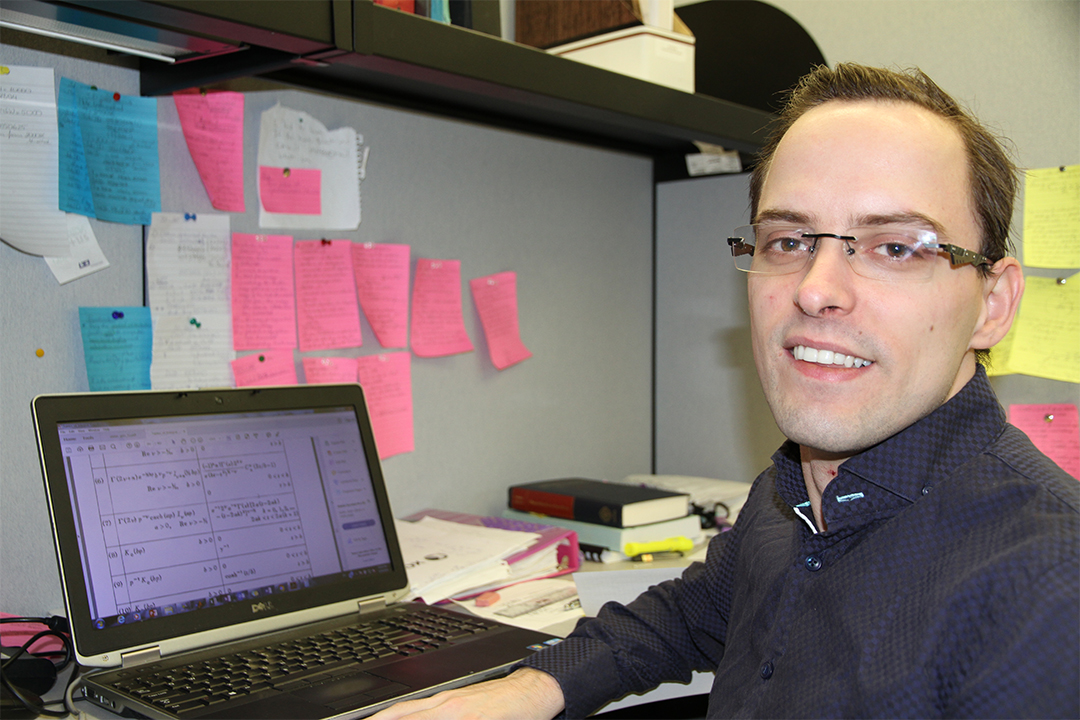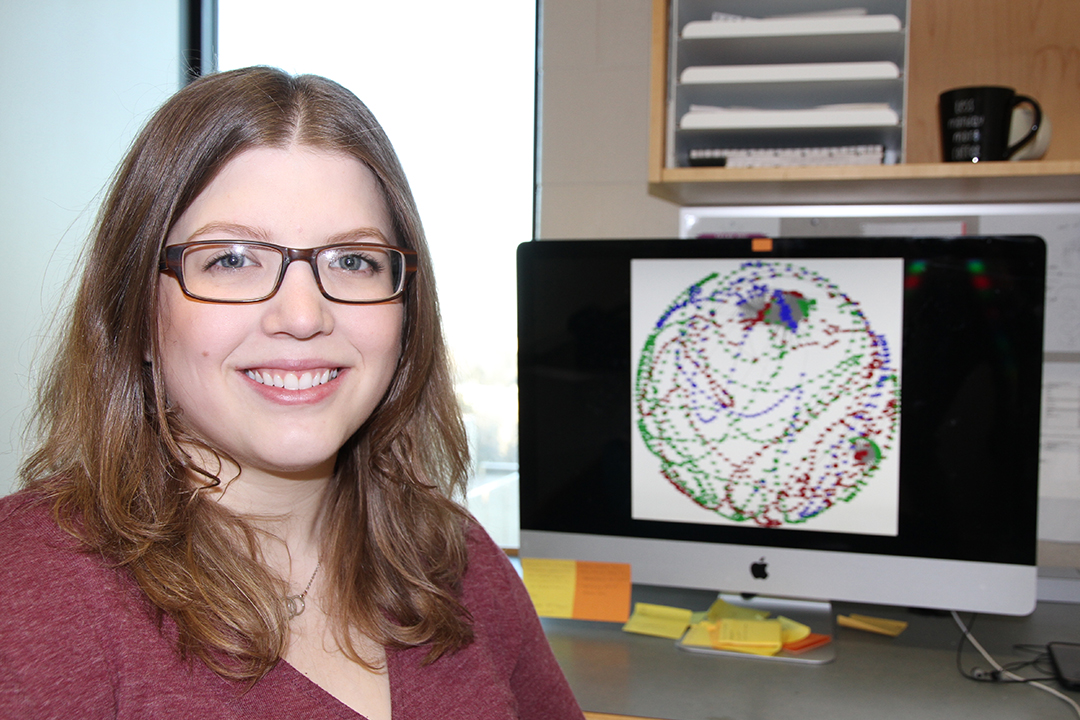A single piece of crisp paper can be folded into any number of shapes. Twist its edges one way and you’ll wind up hoisting a paper crane. A simple re-arranging of those creases, however, could yield a dove, a boat or seemingly boundless other possibilities. “You can think of the genome three-dimensional structure the same way,” MacKay said. “You have your strand of DNA. Fold it one way and it will do one thing, but fold it a different way and it will do another thing, and those will have different structures and functions associated with them.”
MacKay, who studies bioinformatics, is one of two U of S students—along with Jacques Desmarais—to win a Vanier Canada Graduate Scholarship in 2016. The prize is one of Canada’s top honours for graduate students, and awards recipients with up to $150,000 over three years to support their doctoral studies.
For MacKay, that funding is supporting her work on predicting three-dimensional genome structures, as she builds a program that takes in biological data and uses it to create a model of what these structures could potentially look like.
MacKay explained that the project could reveal a new understanding of science at a fundamental level, with vast potential in fields as wide-ranging as agriculture, medicine and essentially anything involved with the study of biology. It could even be used as a starting point to develop new treatments for diseases such as cancer.
“One of the main areas that three-dimensional genome structure has been shown to have a big role in is cancer research,” she said. “With cancer, different folds can happen that cause different mutations or rearrangements to occur in the genome. If we can develop therapies to reverse these disease-related folds, we can potentially return cells back to a non-cancerous state.”

For his part, Desmarais, a PhD student in geology, earned his Vanier Scholarship in part due to his research into defining objects unseen to the human eye.
Desmarais is working on computer algorithms that calculate properties of materials. The project works entirely from a theoretical standpoint, based on the concepts of quantum mechanics and using little to no prior knowledge from experiments.
“Say we wanted to know how the inside of the Earth works, because the inside of the Earth is what drives volcanoes and plate tectonics and things like that,” he said. “Since we can’t get there, and since often it’s too difficult to simulate the high pressures and temperatures, sometimes the only thing we can do is theory.”
Among other applications, the algorithms are used to study crystals that make up geological formations on Earth and other planets.
“Using these types of theoretical approaches, one can calculate the properties of materials inside of planets and, from there, start to predict how exactly the inside of that planet works,” he said.
The Vanier Scholarship has allowed Desmarais to team up with researchers in Italy working on a project called Crystal, featuring collaborators from around the globe who have been developing these types of algorithms for more than 60 years. In 2016, he joined the group for three months, got a grasp of speaking Italian and relished the opportunity to learn from bright minds from around the world.
“They have a lot of collaborators from different countries and they all come to meet at this particular lab,” he said. “Maybe every week there would be a new professor or researcher from a different country and I’d get to meet them and learn something from them.”
After six decades of work already, there is no end in sight for the Crystal project. While some researchers may be uncomfortable working without a strict deadline, Desmarais is excited about the possibility of remaining involved in the project long-term.
"It’s an exciting project. We’ll see how things turn out, but I could see myself working on it or similar projects for some time.”
